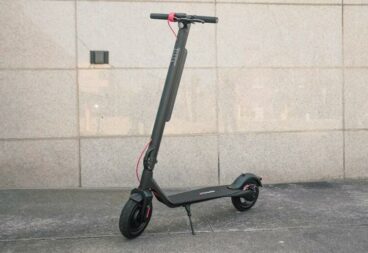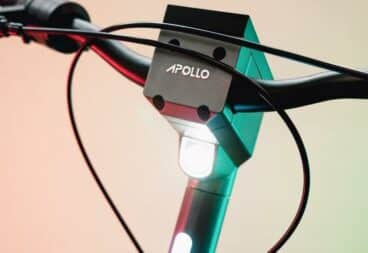The Apollo Phantom V3 is a long-awaited upgrade for existing Phantom owners, and for lovers of Apollo scooters. It is the third iteration of a scooter that has vowed to remain relevant through the changing industry dynamics–and with new firsts, like LUDO mode and an App.
Apollo Phantom V3
$2,199
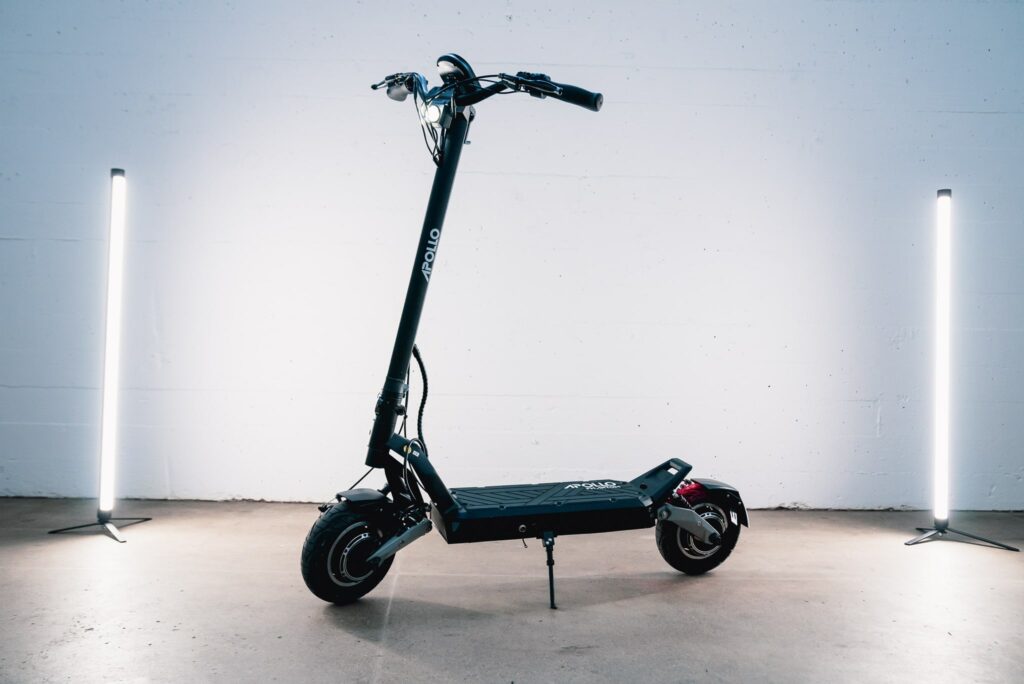
If there’s something Apollo does well, is staying relevant. And none of their scooters are more relevant than the Phantom series. We’ve called the Phantom the most upgradable scooter, and the long awaited V3 upgrade is here.
You may (or may not) know the Apollo Phantom as the scooter that changed the light heavyweight scooters paradigm. Or, you might even know it as Apollo’s first in-house design. Whatever the case, one thing stands true, and it’s that the Apollo Phantom is a significant landmark in scooter history.
Apollo kept everything we loved about the V2 (obviously) and gave the V3 a thorough touch-up to keep up with other minibeasts of the day, and we’re about to dive into the details.
Technical Specifications
| Tested top speed: 40.7 mph* | |
| Tested range: 28.4 mi* | |
| Weight: 76 lb* | |
| Max rider weight: 300 lb | |
| Water resistance: IP54 |
* Based on our performance tests which may differ from the manufacturer’s claims.
Highlights
| Thumb Throttle With Zero Dead Zone. | |
| Best Regen Brakes Ever of Any Scooter In Its Class | |
| Still The Best Overall Ergonomics In Its Class | |
| It’s The Only One Of The Three Comparison Scooters With An App | |
| Has a High Rider Weight Capacity | |
| Quad Shocks Are Good But Hydraulic Damping Would Make Them Even Better | |
| Has A Little Less Performance Per Dollar Than The Comparison Scooters | |
| We’d Love To See Tubeless Tires On The Next Generation | |
| We Wish The Display Was Brighter. |
Our content is independent, but buying through our links may earn us a commission.
Apollo Phantom V3 Summary
Apollo is probably the most recognized North American (Canadian) scooter brand. If you’ve loved scooters for a while, then you know how monumental the Phantom V1 release was. Apollo had taken the bold step to not just insource design and production. But they’d also attempted to completely challenge the status quo on a scooter class that we all thought was giving its absolute best.
Enter the Phantom V1. It looked like nothing we’d seen before. The trigger throttle that had been on pretty much every high-power scooter ever, was now gone and replaced with a thumb throttle and display that was 3 to 4 times bigger than the QSS4.
The stem wasn’t round and didn’t wobble at all. The headlight was up high where car drivers could see it, and the light coming out of it didn’t suck. Most of all, the Phantom just felt good to ride because of the quad shocks and kick-ass ergonomics.
Apollo had taken their time (years) to gather feedback from their 15,000 consumer database and carefully integrated that feedback loop into their engineering process. And they weren’t done with the V1. A year later, after even more feedback, they released the V2, which featured 12 upgrades. We did a comprehensive review of the Apollo Phantom V2, but what was interesting was that Apollo availed an upgrade kit that essentially converted the V1 into the V2. Apollo then promised to keep working on improving the Phantom, and now, we have the Apollo Phantom V3 electric scooter.
The Phantom V3 starts at $2,299. It is (still) a 2400 w motor scooter, with about 3000 w peak power. The V3 is another completely in-house design, and owners of the V2 can get the upgrade kit to transform their V2 into a V3. Other than the upgrade that everyone’s talking about (hint…LUDO), there’s a lot to expect from this new iteration of the Phantom. Have a look:
So What’s New on the Apollo Phantom V3
The Phantom V3 has gone through a few upgrades. Let’s explore a few of them and discover what it brings to the table.
- It’s the first generation of Phantoms to come with app connectivity that provides riders with an unprecedented level of control over their scooter.
- The V3 now has a MACH 1 controller, generating an impressive 25 amps of power per motor. This upgrade not only enhances the scooter’s top speed and acceleration but also delivers a smoother power distribution.
- The V3 has a dedicated brake throttle for regenerative braking. This feature allows riders to use regenerative braking alone or in conjunction with mechanical brakes, significantly improving the braking distance compared to the V2.
- It features a new throttle design, which now features larger paddles, along with a new spring mechanism, ensuring comfortable contact for the rider. The control buttons have also been enlarged, making them more accessible and user-friendly.
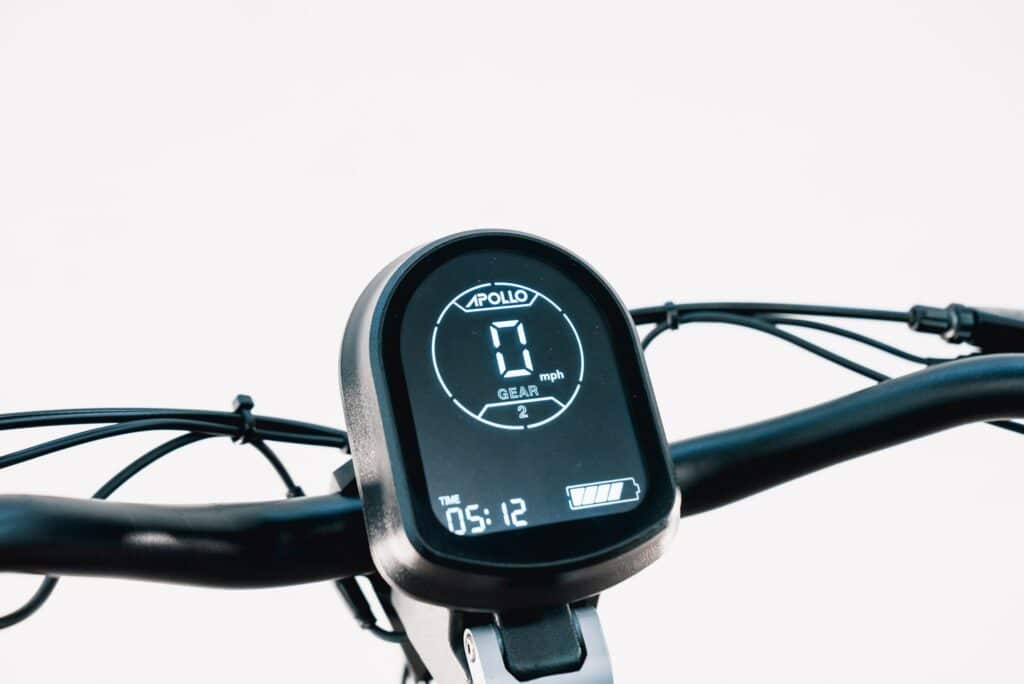
- Another noteworthy upgrade is the reprised display, which is larger and features an anti-glare screen and a higher refresh rate, offering riders enhanced clarity.
- Furthermore, the V3 model now includes front signals, a feature that was missing in the V2, which only had rear signals.
- Finally, the controls and buttons on the Phantom V3 have undergone a strategic rearrangement for a more functional layout(More on this in the cockpit section of the article)
Our Take: The Phantom Is Getting Way “Scarier” With Ludo Mode And Regen Brakes That Are Smoother Than Silk!
Apollo Phantom V3 Alternatives and Competitors
Exploring your options with a budget of $2,299; let’s take a look at how the Apollo Phantom V3 stacks up against other scooters in its class.
Vsett 10+ Vs.Apollo Phantom V3
Compared to the Vsett 10+, the Apollo Phantom V3 falls slightly behind in acceleration, speed, and range. However, it makes up for it with smoother throttle control and superior braking capabilities, outdoing not just the Vsett but all other scooters in its class. Additionally, the Phantom V3 boasts a lighter weight, a more spacious deck, and a higher rider weight capacity.
The Mantis King GT Vs. Apollo Phantom V3
The Mantis King GT stands out with its top-of-the-line suspension system featuring adjustable hydraulic coil-overs both in the front and rear, delivering an incredibly smooth ride. It also boasts the longest range among its peers. However, it falls short in terms of throttle control, with a noticeable dead zone that can be a bit jarring for some riders. Additionally, it has the lowest weight capacity of the group at 265 lbs.
Synergy Tsunami Vs. Apollo Phantom V3
As roomy as the Phantom’s deck is, the Synergy Tsunami’s deck is even bigger, as is the handlebar height, and the 350 lbs weight limit is XL too. It also offers more range than the V3 but falls short in terms of hill climbing ability and top speed compared to the V3 and other competitors. Additionally, while the brand is well-known in Canada, it’s still establishing itself in the US market compared to the other three established competitors.
Comparison Scooters Section
Model
Top Speed**
Range**
Weight**
Price
Kaabo Mantis King GT
45.1 mph
36.6 mi
74 lb
$2,195
Apollo Phantom V3
40.7 mph
28.4 mi
76 lb
$2,199
Synergy Tsunami
38.4 mph
30.0 mi
77 lb
$2,199
Vsett 10+
43.3 mph
33.6 mi
80 lb
$2,190
Is it Good for Bigger, Heavier Riders?
Yes, all 3 versions of the Apollo Phantom are well-suited for bigger and heavier riders. But here’s why the V3 is optimal for the big dawgs.
First, the Apollo Phantom V3 electric scooter is rated for a max rider weight of 300.0 lbs. Its build alone tells you that it won’t crumble under heavy weights–it’s a solid, sturdy scooter that can handle its own. It is ultra-spacious on the 20.5-inch by 6.8-inch deck, allowing riders with larger feet to shift around comfortably.
And if you’re in the 6.0 ft (+) club, then the 40.3-inch handlebars are a welcome addition: unlike short handlebars, you won’t be forced into an awkward, hunched riding stance.
The V3 scooter has more than enough power for the bigger rider. The performance doesn’t take a crippling hit with the added weight thanks to the large 1170 wh battery and powerful 2400 w motors. But, even better, the scooter’s 10.0-inch air-filled tires and quad shocks ensure that the ride is super smooth. However, heavier riders might want to add spring preload to keep suspension travel optimal for their weight.
Apollo Phantom V3 Electric Scooter Review
Performance Summary
| Acceleration (0 to 15 mph) | 2.6 seconds |
| Acceleration (0 to 20 mph) | 3.7 seconds |
| Acceleration (0 to 25 mph) | 5.1 seconds |
| Acceleration (0 to 30 mph) | 7.3 seconds |
| Acceleration (0 to 35 mph) | 10.8 seconds |
| Acceleration (0 to 40 mph) | 30.0 seconds |
| Top speed | 40.7 mph |
| Braking distance (15 to 0 mph) | 9.5 feet |
| Range | 28.4 miles |
| Hill climb | 8.8 seconds |
Acceleration
The V3’s acceleration is on par with its competitors, with a 0-30.0 mph time of 7.3 seconds in Ludo mode. This puts it ahead of the Phantom V2 by over a second but falls short compared to the lightning-fast Vsett at 5.3 seconds and the Mantis King GT at 5.8 seconds. The other competitor, the Synergy Tsunami came in last with a 7.7-second time.
But what really sets the V3 apart is its new throttle system, which is not only responsive but also incredibly smooth. It’s so smooth that you can cruise at lower speeds without any jerks or jolts.
To further enhance the riding experience, riders can fine-tune the throttle response by selecting different ride modes (1, 2, or 3), and even Ludo mode for a more intense experience.
Additionally, you can further customize acceleration within the app’s Acceleration Response settings on a scale of 1 to 10 (1 being gentle and 10 being aggressive). Although subtle, these changes are definitely noticeable – we saw a difference in our acceleration data when adjusting from level 5 to level 10.
Top Speed
The Apollo Phantom V3 e-scooter has an ESG-certified top speed of 40.7 mph, which is exactly 1.0 mph faster than its predecessor, the V2. This top speed is impressive, and we believe it’s as fast as anyone would like to go on 10.0-inch tires. The V3’s top speed places it below the Vsett 10+ (43.3 mph), Segway GT2 (41.8 mph), and Mantis King GT (45.1 mph), but above the Synergy Tsunami’s 38.4 mph top speed.
When it comes to stability at high speeds, the V3 performs well without any dangerous death wobbles or instability when sustaining top speeds or letting off the throttle. However, we did experience some front tire vibration in the vertical direction above 35.0 mph on our scooter, which was similar to what we’ve experienced before on the Vsett 10+. We think this issue could be resolved by balancing the front tires and/or more suspension damping.
Overall, while not quite as fast as some other models on the market, the V3 offers a stable ride at high speeds and an impressive top speed that will satisfy most riders’ need for speed.
Hill Climb
One of the biggest advantages of riding a dual-motor electric scooter is the ability to climb hills as fast as you would drive in a car.
During our tests, The Phantom V3 proved its worth with its dual 2400 W motors, reaching the top of a 200.0 ft 10% hill in just 8.8 seconds and outpacing the V2, by 0.3 seconds. It also reached an impressive top speed of 22.6 mph by the end of the run.
However, while this performance is certainly remarkable, it still falls behind some of its competitors, like the Vsett 10+ and Mantis King GT, both of which clocked in at 7.5 seconds to reach the top of our test hill.
Range
The 1170 Wh battery on the Apollo Phantom V3 electric scooter still managed to impress us during our test run, clocking in a range of 28.4 miles. Sure, it’s not as far as the V2’s range, which spanned 3.0 miles longer, but that’s primarily because we rode the V3 in Ludo mode the whole time. It’s also worth noting that the V2 has a slightly larger battery capacity of 1216 Wh, so the difference should not come as a surprise.
In fact, among the three competitor scooters, the V3 had the smallest battery, understandably giving it the least range.
However, don’t let that deter you; a range above 25.0 miles is more than adequate for most rides! Plus, it’s worth noting that we put the V3 through its paces on a hilly range test course, pushing the scooter to its limits. In less demanding situations – think moderate speeds and flatter terrains – it’s entirely possible to approach the manufacturer’s stated range of 40.0 miles.
One thing to watch out for is an issue we noticed towards the end of our range test. The scooter indicated that it had 10% of battery remaining for a very long time before suddenly dropping to zero and cutting off. This is likely because ours has an early version of the V3 firmware, so we expect there will be an update soon that fixes this. In the meantime, you can rely on the app’s indicated range remaining prediction, which was pretty much spot-on during our test.
Braking
The Phantom V3 comes equipped with disc brakes on the rear and front, as well as a powerful regenerative braking system that deserves recognition. You can choose between mechanical or hydraulic disc brakes – either way, both options still provide smooth efficiency and responsive stopping.
This striking combination of braking features results in the Phantom V3 achieving a remarkable stopping distance of 9.5 ft from a speed of 15.0 mph, beating the Vsett 10+ (10.1 ft), Mantis King GT (9.6 ft) and Phantom V2(10.4 ft) in head-to-head comparisons.
And, in as much as the improved braking performance can be quantified, the numbers alone don’t reveal the whole story. There’s also the great feel of the Phantom V3’s brakes that truly sets it apart from the rest.
This unique attribute is accentuated by Apollo’s seamless integration of variable regen brakes into the brake levers of the Apollo Air, Apollo City, and now the Phantom V3 models. Unlike most other scooters, whose regen brakes function through a simple on-or-off operation triggered by a brake light switch, the Phantom V3’s variable regen system operates on a progressive scale, providing more regen brake power as you squeeze the brake lever harder. It’s so fairly transparent and smooth you might not even notice it’s happening.
Moreover, you can even use the app to fine-tune the intensity regen brakes to suit your needs. However, approach this process with caution. Increasing the intensity too much from the start may result in an overly aggressive braking force, which can cause your vehicle to stop unexpectedly and compromise your safety.
With its powerful 100% regenerative brake lever, you can choose to forgo using the traditional mechanical brakes. When you engage the regen brake, the sensation is almost indescribable. It feels like a smooth, elastic force, akin to a rubber band, that is gently tugging you backwards, offering an unparalleled sense of control and an incredibly smooth deceleration. The strength of the regenerative brake is so impressive that it has the potential to stop the scooter completely, but with the added bonus of never locking up the brakes.
In our experience, the most efficient and secure method to brake on this scooter is by utilizing the front brake lever in combination with the regen lever. This approach essentially replaces the need for the rear mechanical brake, and the reasons for this are clear. When applying mechanical brakes forcefully, it’s all too easy for the rear tire to lock up. This lockup can cause three key issues – wearing out the tire, prolonging stopping distance, and potentially causing you to slide sideways unintentionally. By using the regen throttle instead of the rear brake, scooters benefit from a smoother, more controlled stop with no risk of tire lockup. This leads to enhanced safety, better stopping distance and improved preservation of your tire and brake pads.
Ride Quality
There was a time when high-power scooters were caught in a competitive whirlwind, with manufacturers vying to create the fastest model on the market. Indeed, we reviewers and scooter aficionados were certainly guilty of feeding this frenzy, placing top speed as the primary yardstick of a scooter’s worth. However, Apollo recognised that this obsession with blistering velocities was not the be-all and end-all for scooter enthusiasts.
Instead of following the prevailing trend, they boldly invested their resources into enhancing ride quality, overall ergonomics, and ease of use. It’s no wonder the Apollo Phantom V3 is the only lightweight heavyweight scooter model with a dedicated app (we stand corrected if we’re wrong).
The Apollo Phantom scooter line has come a long way from the previous generation scooters, boasting significant ride quality improvements that genuinely make a difference in the overall riding experience. For instance, the Phantom scooters came with a brand-new tire profile that makes cornering effortless, providing increased control during maneuvers. Add to that a no-wobble stem, pistol grips, and pull-back handlebars, which all make you feel incredibly grounded and connected to the scooter.
Okay, that’s mostly some V1 stuff, and honestly, the other scooters, like the Vsett and Mantis, have mostly caught up on these features. So what has Apollo done on the Phantom V3 that sets it out to be so different? Variable regen brakes. Apollo have always been masters of blending regen and mechanical braking, and on the V3, they got it just right. The result? A seamless, responsive variable regen brake that enhances overall safety and control while riding.
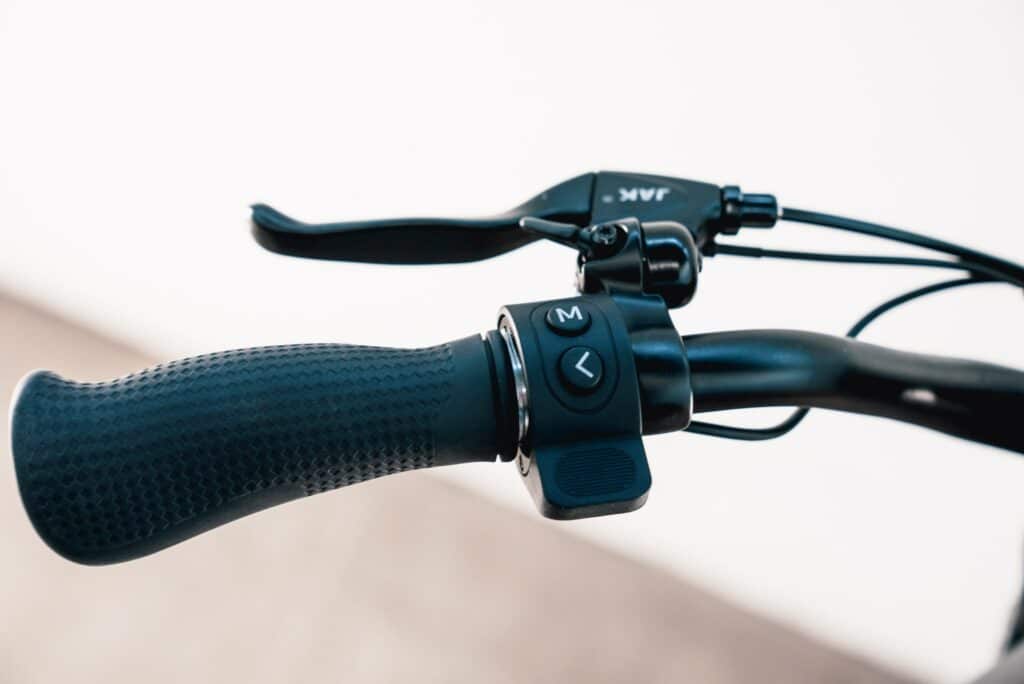
The V3 comes with a dedicated thumb brake throttle on the left-hand side for 100% regenerative braking-this brakes are so smooth you will easily find yourself not using the mechanical brakes at all.
Over on the right side of the handlebars is a matching thumb throttle. We love thumb throttles because you’re never going to confuse it with the brake like you could if it were a trigger throttle. Also, the hand position when pressing the throttle is more comfortable, especially on long rides. No more of those awkward splits you get on trigger throttles. And, best of all, the V3’s throttle has ZERO dead zone at the beginning of travel.
The throttle response is as smooth as it gets from a non-sine wave controller, and that’s because of what the Mach 1 motor controller does: self-calibration. During assembly at the factory, the motor controller flawlessly calibrates itself to match the exact specifications of the motors installed on the scooter. Anyone installing the V3 upgrade kit on their V2 will get to see this automated process firsthand.
Now, back to other small details that make or break the ride quality.
The Apollo V3 comes equipped with a Quadruple Suspension System (featuring two front and two rear spring suspensions), 10.0-inch tires, and a well-sized deck which combine to create an overall comfortable experience. The V3’s suspension might not be designed for off-road adventures, but it is still highly commendable for its ability to handle the daily grind with ease. It has efficient shock absorption and vibration dampening that can take on most minor road imperfections.
Moreover, the V3 has generous ground clearance, enabling riders to easily glide over road bumps and obstacles. The 10.0-inch tires provide excellent grip on any surface, making it suitable for street riding as well as light off-road escapades. On the other hand, the spacious deck offers plenty of room for riders to feel secure when leaning into turns or accelerating. And finally, with the Phantom scooter, you can enjoy a silent ride–the scooter’s motors are so quiet it’s virtually inaudible, living up to the phantom name.
Apollo Phantom V3 Features
Portability
You might be thinking, “75.8 lbs doesn’t sound all that portable!” And while it’s true that the V3 isn’t exactly feather-light, its unique design makes it more portable than many of its competitors.
As it turns out, the Phantom’s deck is actually longer than the Vsett 10+ by 2.0 inches! But, surprisingly, the overall length of the Apollo Phantom V3 electric scooter is still shorter. Now, how can that be?
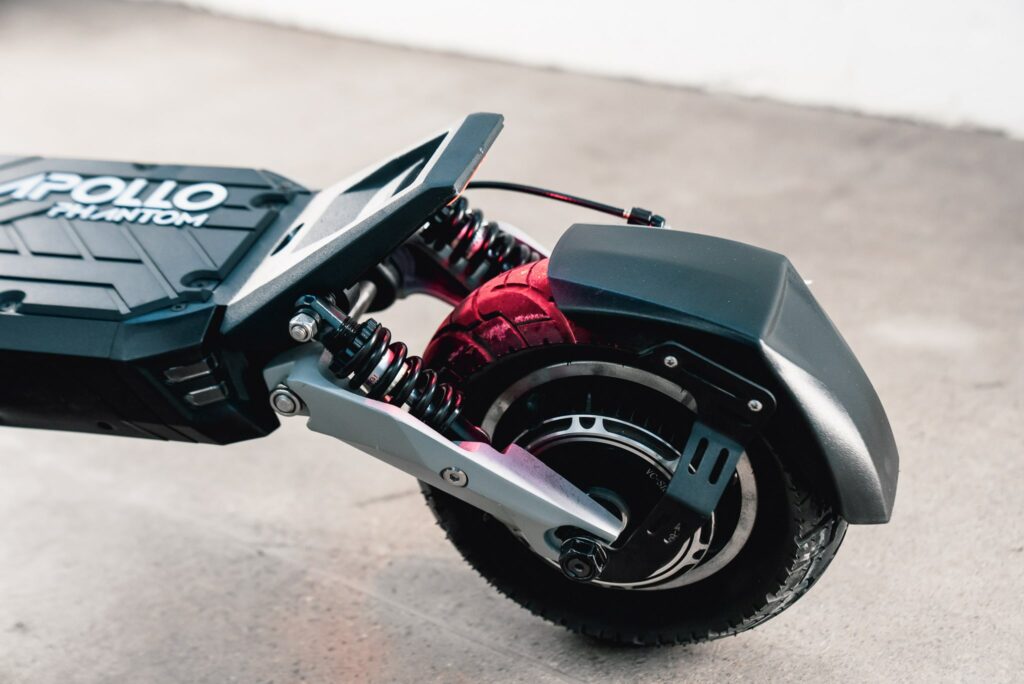
Well, it’s all thanks to the innovative quad shock design. By cleverly positioning these shocks to the sides of the wheels, the folks behind Phantom have managed to reduce the wheelbase distance, thus effectively shrinking the scooter’s overall length. Here’s the kicker – this reduction gives us a bit more space to work with, allowing for a longer deck size that provides enhanced comfort while keeping the scooter’s length unchanged.
In contrast, scooters with suspension systems placed between the wheels and deck increase their wheelbase distance, resulting in a larger overall length. This necessitates a smaller deck size to counterbalance this increase.
The V3 also has one of the smallest folded dimensions amongst its comparison scooters, coming in at a compact 49.0 inches by 28.0 inches by 21.0 inches.
What makes it even more convenient is the clever addition of a stem hook, which effortlessly latches to the deck, simplifying the carrying process. You might assume this intuitive feature would have been included in Apollo’s scooter designs from the beginning, but surprisingly, it wasn’t always the case until the Phantom came along. However, it’s important to note that the Phantom still has a bit of heft to it, so carrying it for longer distances might not be ideal.
Cockpit
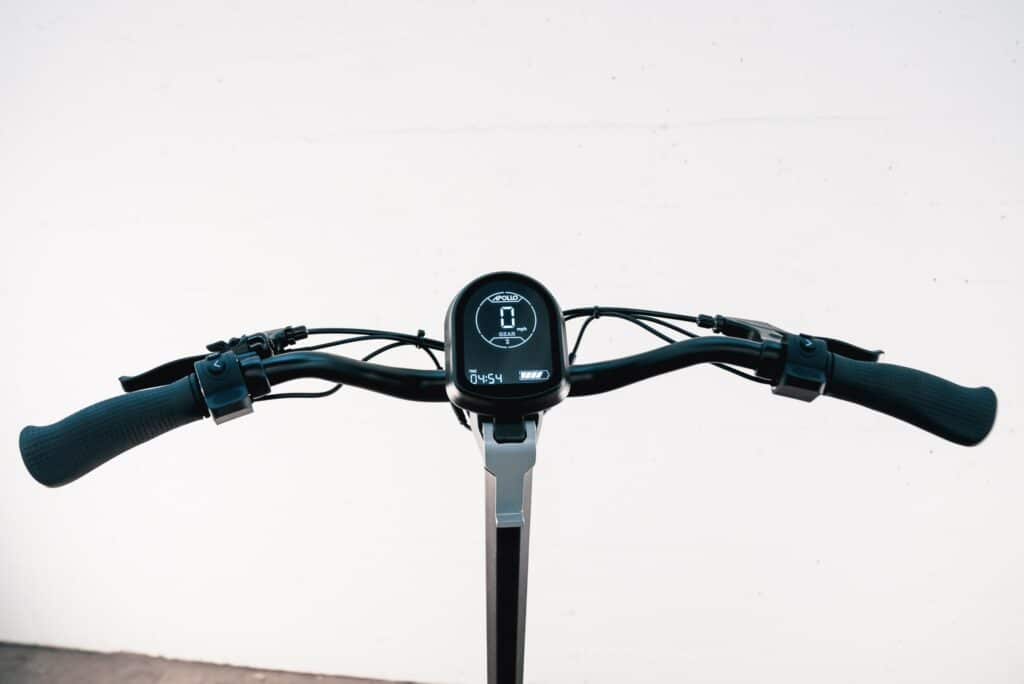
Stepping into the cockpit of the Phantom V3, you can’t help but notice the sleek, minimal approach they’ve taken with the design. They’ve realized that less is more when it comes to user-friendly interfaces.
Right away, your eyes will be drawn to the addition of a regenerative brake throttle conveniently situated on the left side. Even more impressive is the decision to relocate the turn signal and light switch buttons right onto the brake throttle and accelerator, making them super easy to operate.
They’ve also given the display a bit of a makeover, trading the hexagonal shape for a more rounded one – not to mention how much clearer it is now with the higher refresh rate, definitely a league above the V2’s display.
In terms of the arrangement of the controls, to the left of the curved handlebar, you have the rear brake lever and regenerative brake throttle that houses: the mode button used to access settings on the display, the left side indicator and a bell.
Now, shift your attention to the right side, and you’ll spot the front brake lever accompanied by the throttle that houses a power button and the right side indicator.
The updated indicator button layout on the Apollo Phantom V3 scooter is a welcome change for riders. It’s easy to use, even with gloves, as the buttons are not as cramped compared to the previous model. This intuitive design also minimizes the chances of making mistakes while indicating, as one simply needs to press the right button to indicate turning right and the left button to indicate turning left.
To further enhance the rider’s awareness, the V3 now has dashboard indicators that clearly show when the signals are active. Additionally, an audible reminder has been integrated to alert the rider about the activated signals. But it’s important to note that the sound might be hard to hear when there’s a lot of traffic or when you’re wearing a full-face helmet.
The V3 is the first generation of the Phantom with app control. You can either use buttons on the cockpit or the app to tailor the acceleration and regenerative brake response to your exact specifications, change ride modes, toggle lights on or off, enable zero start and cruise control and even lock your scooter for added security.
Besides that, the app also provides a wealth of rider metrics, including the remaining range of your scooter, ensuring you never find yourself stranded mid-adventure. Additionally, the app seamlessly integrates GPS navigation that helps you to plan your trips beforehand.
The app also grants you exclusive access to the Apollo store, where you can find new and exciting scooter accessories and upgrades to elevate your ride further. And finally, the App comes in handy if your scooter needs service because you can transmit data to Apollo to help diagnose your scooter.
Lights
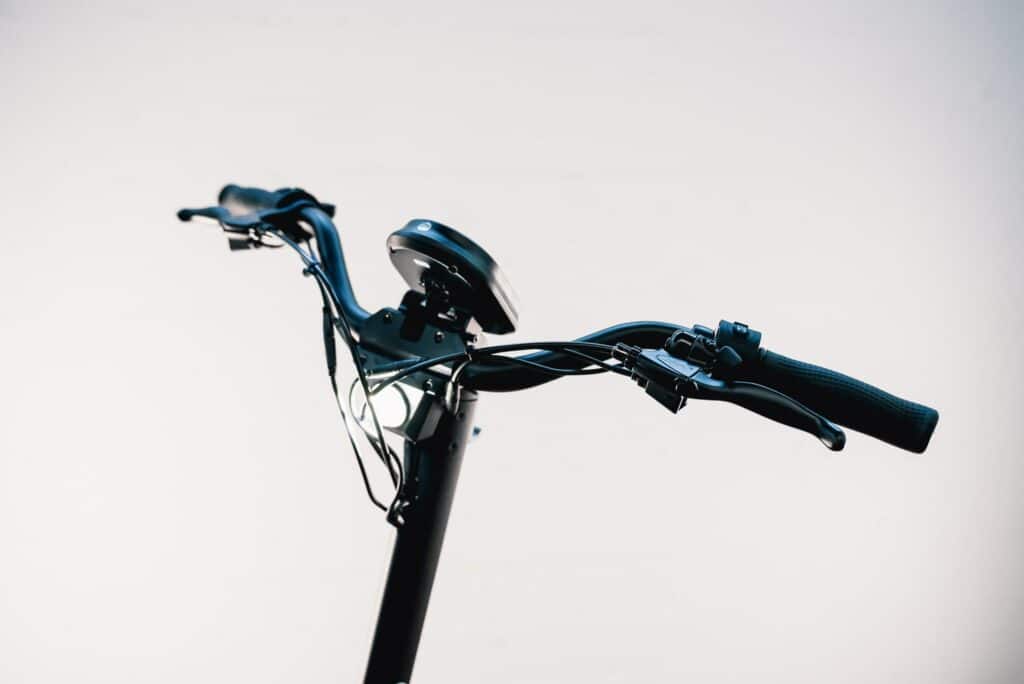
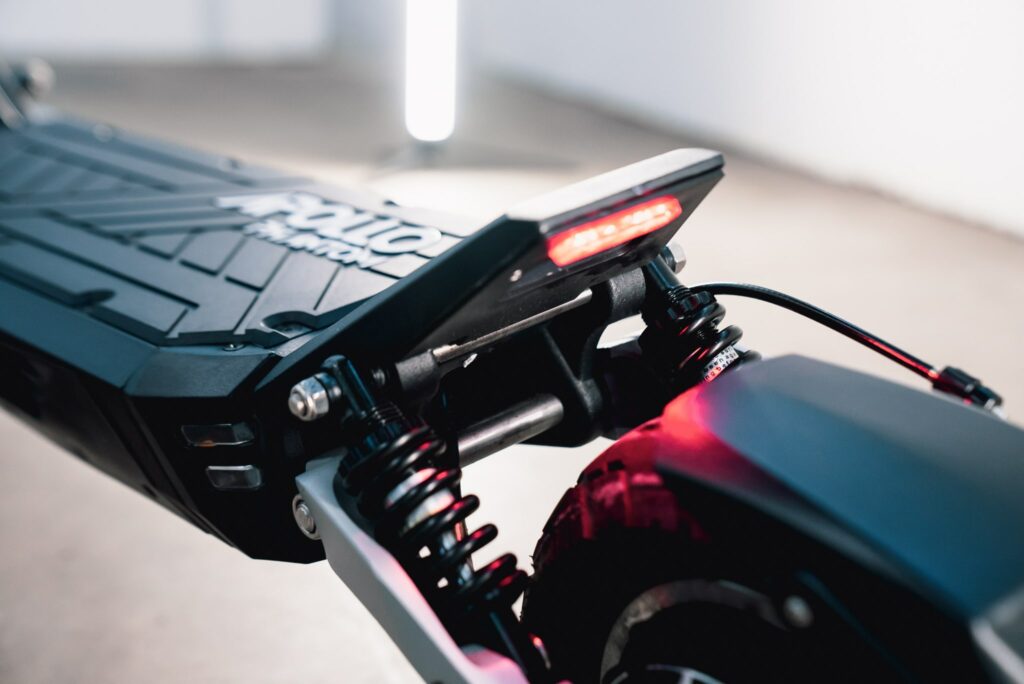
The Phantom’s lighting package has always been impressive, but the latest upgrades bring it even closer to perfection. While maintaining its 1000-lumen high-mounted headlight and rear light that doubles as a brake light, the new model adds a much-anticipated safety feature: front turn signals.
This simple yet impactful addition ensures that drivers from the front can now accurately read your turning intentions, an enhancement on V2 models which only featured rear turn signals. The vivid orange turn signals on both ends can be spotted even in the daytime, ensuring a safer riding experience.
Tires
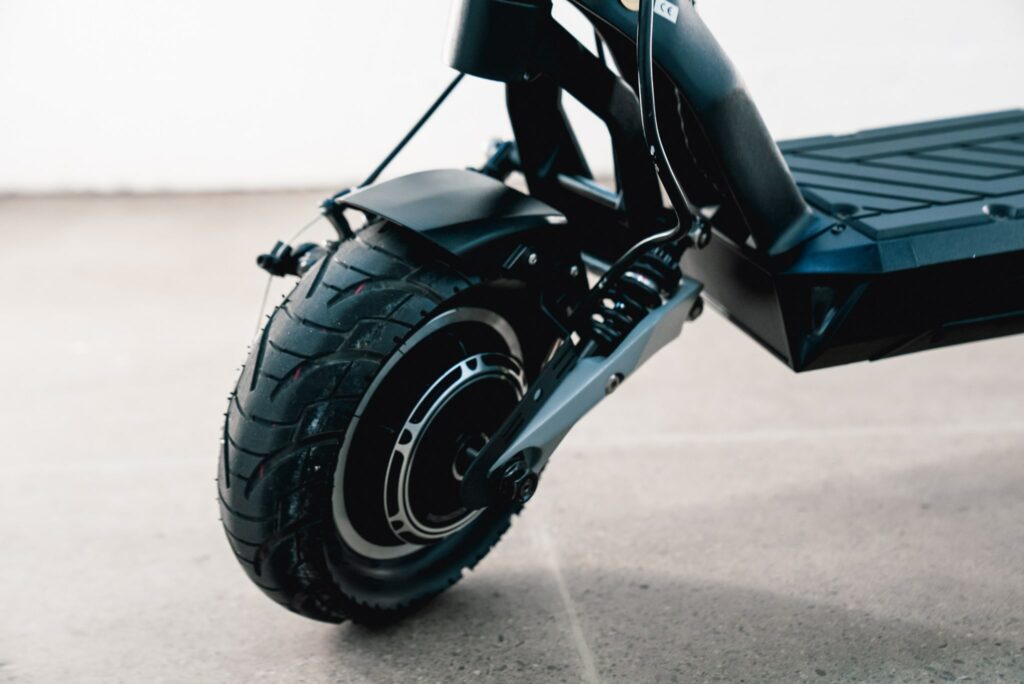
The Apollo Phantom V3 electric scooter has impressive 10.0-inch by 3.3-inch pneumatic tires that have been designed with a new profile to tackle corners effortlessly and assist with handling. These tires provide exceptional damping that works in harmony with the V3’s outstanding suspension, ensuring a smooth ride over small obstacles.
However, as impressive as these tires may be, one aspect that could elevate the riding experience even further would be transitioning from tubed to tubeless self-healing tires, similar to those implemented on their models, such as the Apollo City Pro. This change would bring additional advantages, as tubeless tires offer a simpler solution for puncture repairs and reduce the risk of pinch flats, ensuring a more reliable ride.
Deck
The V3 is pretty much the standard for a good-sized deck, with the best balance between space and functionality. Measuring a comfortable 20.5 inches in length and 6.8 inches in width, the V3 provides ample room for riders to comfortably position their feet, regardless of foot size, and experiment with various leg placements during their rides.
Although not the widest deck option available in the market, the V3’s design also incorporates a convenient footrest towards the rear, providing additional support and usable space.
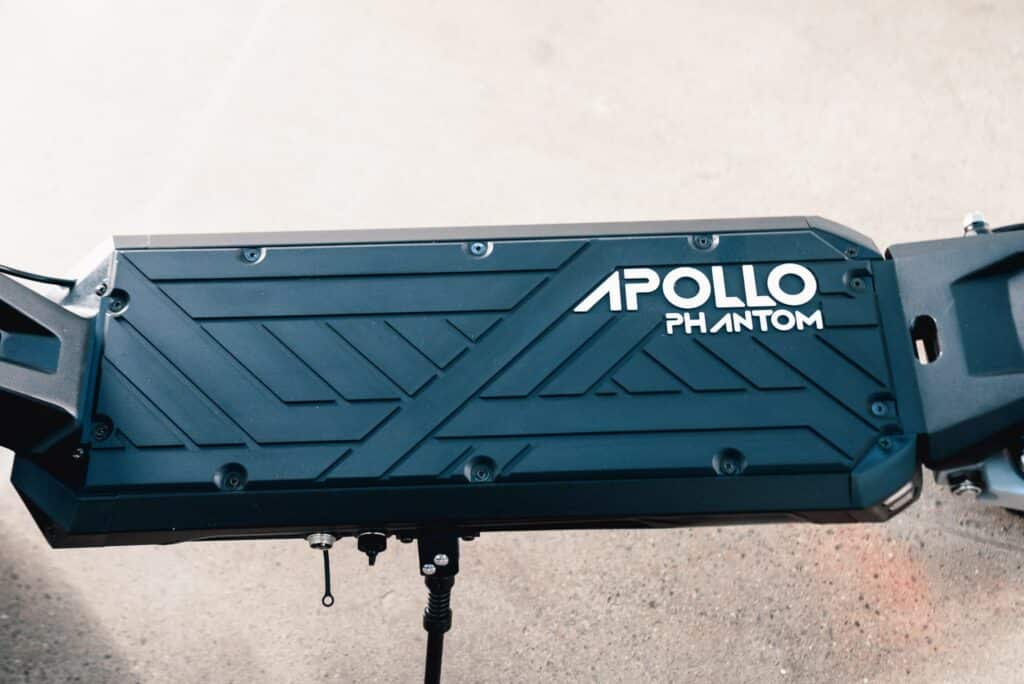
Furthermore, the deck has a rubberized surface, significantly enhancing the grip and promoting stability and control during your rides. Adding an aesthetic touch to it, the V3 proudly showcases the iconic Apollo Phantom logo, giving you the ultimate sense of pride and identity as you ride.
Lastly, with an impressive 6.0-inch ground clearance, you won’t have to worry about scraping the underside of the deck on curbs or other obstacles when you’re out and about.
Build Quality
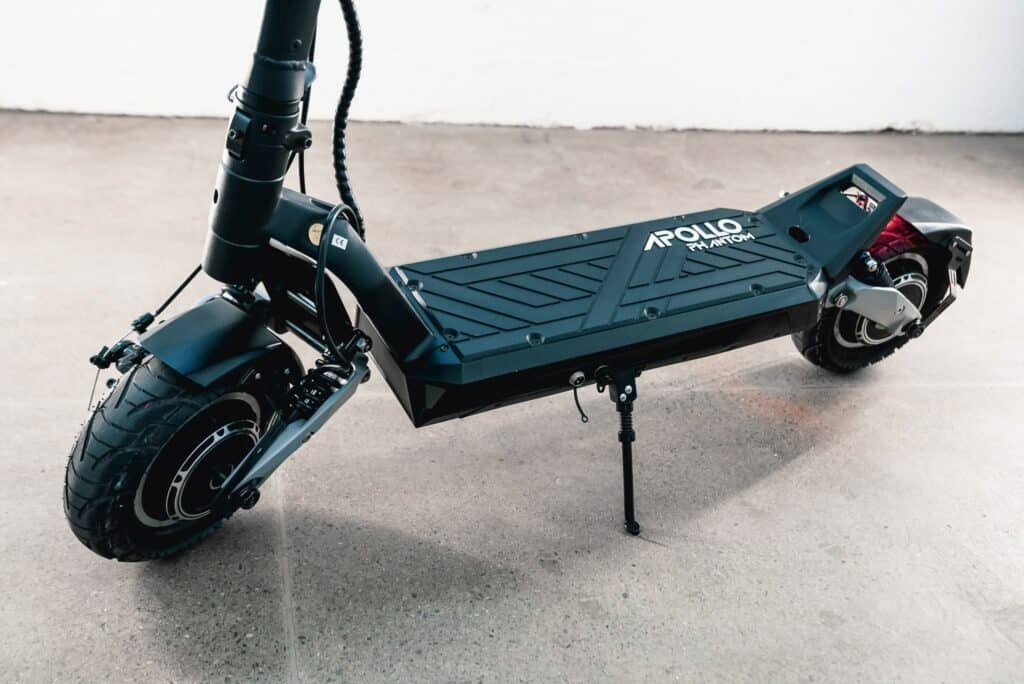
Back in the day, when we were just starting out, we had something called the ESG drop-test. Chuck would just leave the scooter to a free fall, and we would examine how durably built the scooter was by inspecting the level of damage; or just straight up if the scooter worked fine after the fall. Scooters with multiple plastic installations suffered the most, as parts would break, crack or just fall off. This little backstory is a prelude to the Phantom V3’s impressive, almost all-metal build. Seriously, this scooter looks like it could take a couple hundred falls and just bounce back like Iron Man.
We’ve already outlined most parts of the scooter’s build, from the charming display and ergonomic placement of the control buttons. We’ve gone into great depth about the skilled regen plus mechanical brakes integration. And the thumb throttle has been a headliner for the entire Phantom series, so we won’t get into that either. We do love that the scooter now comes with front turn signals, indicators on the display, and an audible warning. The indicators are also a nice touch aesthetically.
The obvious things are a big deal–but the devil is in the details. The V3 now comes with exposed deck screws that allow you to get in there if you need to without pulling up the rubber cover. It sounds obvious until it’s not. For scooters like the RoadRunner RS5+ with the deck-encased removable battery, it’s a 1-minute task. However, for other scooters, getting into the guts requires a skilled hand and tons of patience. So, kudos Apollo.
The other small detail is the steel side stand. It is much stronger than the basic aluminum ones we are used to seeing. And for a scooter of this heft, you don’t want a stand that could cave under the weight. It’s also designed to act as a crash slider, protecting the charge ports in the event of a tip over.
Thankfully, Apollo also updated the screw-on charge port covers. They’re plastic now, so they won’t accidentally short out your port. But, remember to keep them screwed after use, so they’re not damaged or scrapped off.
Another favorite is the stem latch. The V1 eliminated stem wobble with two small changes: one involved the special stem tubing that’s become synonymous with the Phantom series, and the other is the latch, which is super firm and easy to use. A third one could be that the Phantom has two safety catches. Though, as with most stem latches we recommend a quick spray of lithium grease to help keep it working quietly and smoothly.
The quad shocks don’t have any hydraulic damping, but because there are 4 of them, internal friction provides enough damping to keep the scooter from feeling too bouncy. They also have bushings at the top and bottom of travel to keep them from topping out or bottoming out harshly, and if you’re a heavier rider, having the springs on the outside makes it easier to add more spring preload to keep the suspension in the optimal range for your weight.
Finally, if you happen to run into some rain, it’s got reasonably good fender protection. And, its water protection rating is IP54, so it’s ok for light rain, but stay out of puddles if you can.
Safety
There’s no doubt that the V3 electric scooter prioritizes safety for both the rider and those around them. With its well-designed lighting system, the V3 ensures optimum visibility even in low-light conditions, making it easy for others to spot you while riding. Additionally, the built-in turn signals allow for clear communication of your turning intentions on the road, significantly lowering the risk of accidents. The thoughtful inclusion of a bell politely warns pedestrians of your presence, further improving safety.
The scooter’s phenomenal braking system is designed to prevent lock-ups, significantly reducing the risk of losing control and wipeouts during sudden stops. And, for moments when you need to step away from your scooter, you can rest assured knowing that its lock feature provides an extra layer of security against theft.
With all the bases covered, the V3 stands out as one of the trusted choices for safety-conscious riders.
Warranty
All Apollo scooters are backed by a one-year limited warranty against manufacturer defects. And since Apollo is such a popular and established brand, you can be sure that they not only honor their warranties, but that their quality control process ensures that the scooters don’t leave production with manufacturing defects.
For in-depth information on the specific inclusions and exclusions of Apollo’s warranty, the best source is their official website, where you’ll find a detailed breakdown of what’s covered and how to go about making a claim if necessary.
Apollo Phantom V3: Review Conclusion
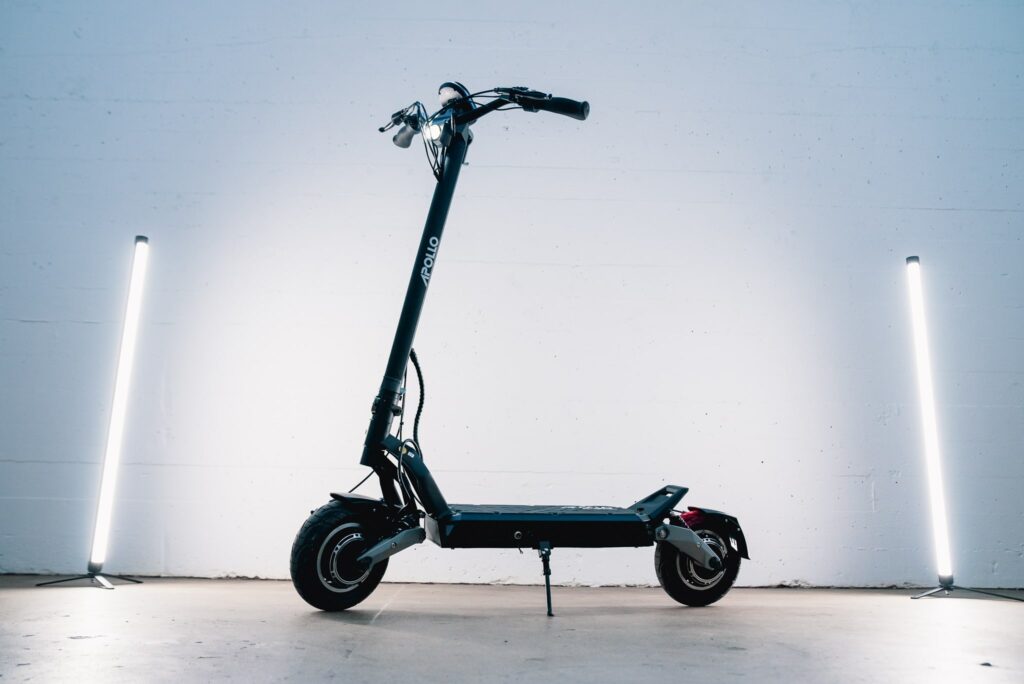
So who is the Phantom V3 for?
It’s designed for thrill-seekers and daily commuters alike. Whether you live in a house with a garage, or an apartment building with two flights of stairs, this scooter will probably fit with your living situation, that is, if you’re reasonably fit, as 75.0 lbs is still a big lift. It’s an absolute blast to ride and will get you to work faster than a car.
And while it is true that the Vsett and Mantis King GT may offer slightly more performance for your dollar, the Phantom V3 distinguishes itself by focusing on enhanced comfort and finesse that provides a premium experience on your daily commute. It even has an app that allows for easy customization and performance tracking.
So, if you’re in the market for a light heavyweight e-scooter, make sure to include the top-notch Phantom V3 in your consideration. And for all the V2 owners out there, rest assured that the improved regenerative braking system is reason enough to make the jump to the V3.
The excitement surrounding the release of the V3 is unparalleled, and as with previous generations, it is highly likely that the initial wave of V3s will sell out in a flash.
To avoid disappointment, we recommend using the link below to get this highly sought-after Apollo Phantom V3 electric scooter. By doing so, you will also support our efforts in creating comprehensive and informative reviews that help you make informed decisions.
Moreover, if we come across any available coupon codes or exclusive discounts, rest assured that we will update the link accordingly, giving you the best possible deals.
Apollo Phantom V3:Manufacterer’s Specifications
| Make | Apollo |
| Model | Phantom V3 |
| Weight | 77 lb |
| Folded dimensions | 49 by 28 by 21 in |
| Motor power, continuous | 2400 W |
| Top speed | 41 mph |
| Range | 40 mi |
| Battery capacity | 1170 Wh |
| Battery recharge time | hrs |
| Max rider weight | 300 lb |
| Brake type | Disc + Disc |
| Tire type | 10.0 in Pneumatic (Inner Tube) + Pneumatic (Inner Tube) |
| Built-in lights | Front + Rear |
| Water resistance | IP54 |



